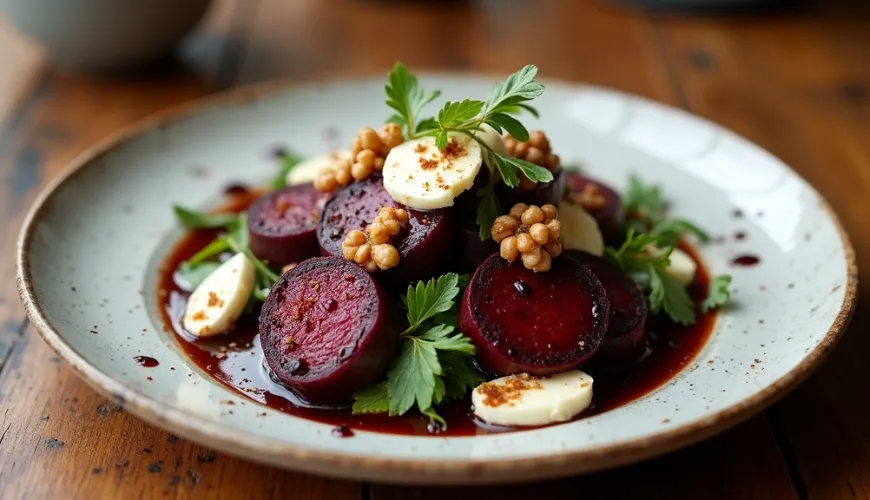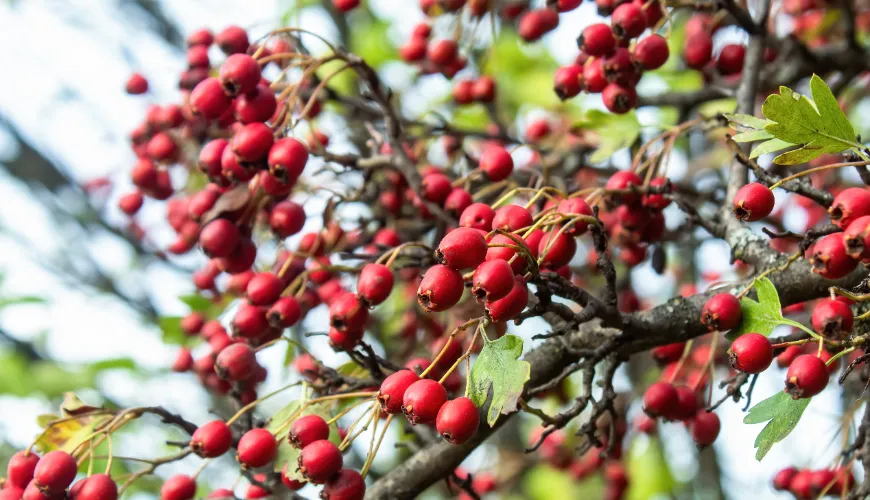
Universal Vinaigrette – A Great Addition to Vegetables and Meat

French Classic on a Plate - Vinaigrette as the Queen of Salad Dressings
When you hear "vinaigrette," many think of a simple French dressing that combines basic ingredients into a tasty emulsion. But behind this seemingly basic foundation lies an unexpected depth of flavors, tradition, and possibilities. Vinaigrette dressing is much more than just a mix of oil and vinegar. It is the cornerstone of European cuisine that can elevate the simplest salad to a gourmet experience.
What exactly is vinaigrette?
Vinaigrette has become synonymous with classic salad dressing loved by people worldwide. The traditional vinaigrette recipe is based on a ratio of three parts quality oil (most commonly olive) to one part vinegar (such as wine or apple). This base is usually enriched with salt, pepper, mustard, honey, garlic, or fresh herbs.
The name's origin traces back to the French word "vinaigre," meaning vinegar. And it is vinegar that is the key element in this dressing, providing a fresh acidity that awakens other flavors in the food. Combined with oil, it creates an emulsion—a temporarily stable mixture that evenly coats every leaf of the salad and adds flair.
But why is this dressing so popular not only in France but around the world?
In simplicity lies beauty—and taste
At first glance, vinaigrette seems simple. But it is precisely in this simplicity that its strength lies. There is no need for exotic ingredients or special cooking equipment. All you need is a bowl, a whisk, or a sealable jar, and a few quality ingredients.
Imagine a classic salad with lamb's lettuce, fresh radishes, and boiled eggs. Without dressing, it seems a bit bland. But once you drizzle it with a gentle vinaigrette dressing with a touch of Dijon mustard, the whole dish suddenly transforms into a delicacy.
One of the reasons vinaigrette is so valued is its versatility. It can be adapted to the current taste, type of salad, season, or specific diet. Want more sweetness? Add honey. Need a spicier note? Reach for garlic or chili flakes. For a milder version, use lemon juice instead of vinegar.
A Life Story - How Vinaigrette Saved a Boring Lunch
Lucie, a young mother from northern Bohemia, tries to cook healthily and seasonally. One autumn day, she walked through a farmer's market and brought home a bag full of fresh vegetables—chicory, lamb's lettuce, apples, and nuts. The original plan was to prepare a simple vegetable salad. But when she tasted it without any dressing, it seemed too bitter and bland.
She thought of trying a homemade vinaigrette dressing. She used olive oil, apple cider vinegar, Dijon mustard, and a teaspoon of maple syrup. The result was a harmonious combination of sweet and sour flavors that perfectly balanced the bitterness of the chicory and gave the salad a whole new dimension. Even the children asked for more. This is proof that even an ordinary dressing can change the approach to healthy eating.
Vinaigrette Dressing - How to Prepare and Modify
The basic vinaigrette recipe is as follows:
Basic Vinaigrette Recipe:
- 3 tablespoons of extra virgin olive oil
- 1 tablespoon of wine or apple cider vinegar
- 1 teaspoon of Dijon mustard
- salt and freshly ground pepper to taste
- optionally: 1 teaspoon of honey or maple syrup
All ingredients are mixed with a whisk or shaken in a jar until an emulsion forms.
But that’s just the beginning. You can create hundreds of variations of vinaigrette. You can add:
- herbs: chives, tarragon, thyme, or basil
- garlic or shallots: for a stronger flavor
- citrus juice: lemon, lime, or orange
- different oils: avocado, sesame, pumpkin
- alternative vinegars: balsamic, rice, raspberry
Thanks to these options, you can easily tailor vinaigrette to the season and mood. In summer, a lemon variant with mint refreshes, while in autumn, a balsamic version with honey and mustard warms.
Why is vinaigrette healthier than store-bought dressings?
Looking at the composition of common salad dressings in stores, it's clear why homemade vinaigrette dressing is so popular among healthy lifestyle enthusiasts. Industrially produced dressings often contain preservatives, artificial sweeteners, flavor enhancers, and excessive salt.
Homemade vinaigrette gives you full control over the ingredients. You use quality fats, such as extra virgin olive oil, which is rich in monounsaturated fats and antioxidants. Vinegars or citrus juices support digestion, and their naturally acidic taste helps reduce the need for salt.
Moreover, you can prepare a larger quantity of dressing in advance and store it in the fridge for up to a week. In a sealable jar, you just need to shake it again before use.
As the famous French chef Jacques Pépin says: “A simple dressing is like a frame for a painting—it highlights what is good without trying to be the star itself." In this spirit, vinaigrette is the best gift you can give your salad.
Where else can vinaigrette be used?
Although most people reach for it primarily as a salad dressing, this delight has much broader uses—it pairs excellently with stewed or grilled vegetables like zucchini or peppers, enhances the flavor of meat and tofu (especially in lemon and herb versions), adds flair to roasted potatoes or legumes, and perfectly complements cold salads made of pasta, couscous, or lentils.
One of the less known but highly effective combinations is, for example, a salad of roasted red beets, goat cheese, and nuts with balsamic vinaigrette. The sweetness of the beets, the creaminess of the cheese, and the acidity of the dressing create a harmony that instantly transports you to a French bistro.
Thus, vinaigrette becomes a universal seasoning of modern cuisine, combining simplicity with flavor, health with convenience, and tradition with creative cooking.
After all—why spend on expensive and often unhealthy store-bought dressings when you can prepare a homemade dressing full of flavor and free from chemicals in just a few minutes? Just open the pantry, take a whisk, and let your taste buds experience something truly authentic.

